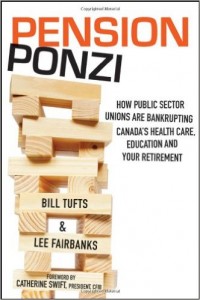
By Bill Tufts, Fair Pensions for All
Special to the Financial Independence Hub
The Harper government introduced the Tax Free Savings Account (TFSA) in 2009. At the time Finance Minster Jim Flaherty wanted Canadians to bolster saving, mainly for retirement. The growth of RRSPs had started to slow and many Canadians are going to be in for a big surprise on their first day of retirement and be greeted with even bigger surprises a decade or two into retirement.
The first year of the TFSA proved a big success when Canadians opened an estimated 3.6 million accounts and deposited $12.4 billion in just the first six months of the plan being opened.
After this initial success and the resulting growth of assets that Canadians could use for retirement, the government decided to build on this success. The plan had expanded once, raising the annual limit from $5,000 and was boosted by $500 as an inflation adjustment for calendar 2013 to $ 5,500. TFSAs were also designed to be cumulative and savers could backfill the TFSA using previously unused accumulated room.
In 2015 the federal budget hiked the annual contribution allowance to $10,000 annually. Canadians around the country applauded this move.
TFSA opponents have no problem with “tax cost” of public-sector pensions
The increased room announced in the budget for the TFSA and the fact that it would accumulate tax free alarmed some groups. The Broadbent Institute was the first out with a report, concerned about the ability of government to continue funding ever expanding and increasing government programs. Broadbent was opposed to the TFSA and any expansion of the program because it was leaving too much money in Canadians’ bank accounts and not coming to government as tax.
Broadbent was against the TFSA mainly because of the “cost” of the tax expenditures that the plan created. Basically, a tax expenditure presumes all income in Canada should be taxed 100%. Any law, rule or provision that reduces taxes for Canadians becomes a “tax expenditure.” For example, the RRSP program in 2014 created a tax reduction when contributions were made ($ 8.1 billion) and the money inside the RRSP accumulates tax free ($ 10.9 billion) but then when money is withdrawn from RRSPs it is taxed. So the net tax expenditure of the RRSP program was $ 13.1 billion in 2014.
The Broadbent report estimated the total tax expenditure cost of TFSAs would be in the range of $15.5 billion a year once the plan “matured.” They were concerned that Canadians could accumulate money without being taxed on the growth of the capital, and complained on “economic or equity grounds.” They went on to suggest it would be a form of welfare for the wealthy. This was in contradiction to the current reality of the plan that it is used mainly by Canadians with under $41,000 a year income.
New PM Trudeau plans to roll back TFSA limit to $5,500 a year
Broadbent prompted lots of union-affiliated research groups to advocate aggressively to roll back the increased contribution space included in the 2015 budget. In early April, Justin Trudeau came out with an election announcement that the TFSA would be rolled back when he became Prime Minister. At the prompting of socially progressive groups and unions, he now plans to roll the TFSA back to $5,500 annually.
The big supporters of rolling back the TFSA are the public sector unions, groups of employees who get their paycheques and pensions from taxpayers.
These are the same unions whose members collect gold-plated, defined benefit pensions funded by taxpayers. It is alarming to note the Broadbent Institute railed against the TFSA but is a strong supporter for government employee defined benefit pensions that “cost” tens of billions more than the TFSA.
The cost of in tax expenditures for pensions in 2014, was $ 21.6 billion, having doubled from $12.5 billion in 2009. Most of this “expenditure” was for the public sector pensions that have now accumulated over $1 Trillion in assets for the 20% of workers that are employed by government. In addition taxpayers contribute as “employers” $ 19.8 billion [1] into public sector pensions, employees contributed $16.3 B in 2014. Pensions cost Canadians over $40 billion this year for the public sector.
Groups like the Broadbent are worried that the “cost” of the TFSA will be estimated at $15.5 billion around 2050. Yet they are surprisingly quiet on the $40 billion cost of pensions today, of which the lion’s share goes to public sector union employees.
TFSA vs Pension Contributions – 2014
Contributors Contributions
Public Sector Pensions 2.8 million $ 39 B
TFSA 11 million $ 40 B
The group Working Canadians is urging all Canadians to make sure that the TFSA is not neutered. It has put out a petition saying “it’s time the majority of us had a fighting chance at a decent retirement for ourselves and our families.”
Join the petition to preserve the $10,000 TFSA limit
Please visit Working Canadians and sign the petition going to the House of Commons demanding fairness and justice for all of us, not just government employees.
[1] http://www.statcan.gc.ca/daily-quotidien/150909/dq150909d-eng.htm
 Bill Tufts is founder of Fair Pensions For All, and a recognized expert on public sector pension reform. He works as a benefits consultant consultant and is co-author (with Lee Fairbanks) of Pension Ponzi: How Public Sector Unions are Bankrupting Canada’s Healthcare, Education and your Retirement (Wiley & Sons).
Bill Tufts is founder of Fair Pensions For All, and a recognized expert on public sector pension reform. He works as a benefits consultant consultant and is co-author (with Lee Fairbanks) of Pension Ponzi: How Public Sector Unions are Bankrupting Canada’s Healthcare, Education and your Retirement (Wiley & Sons).


